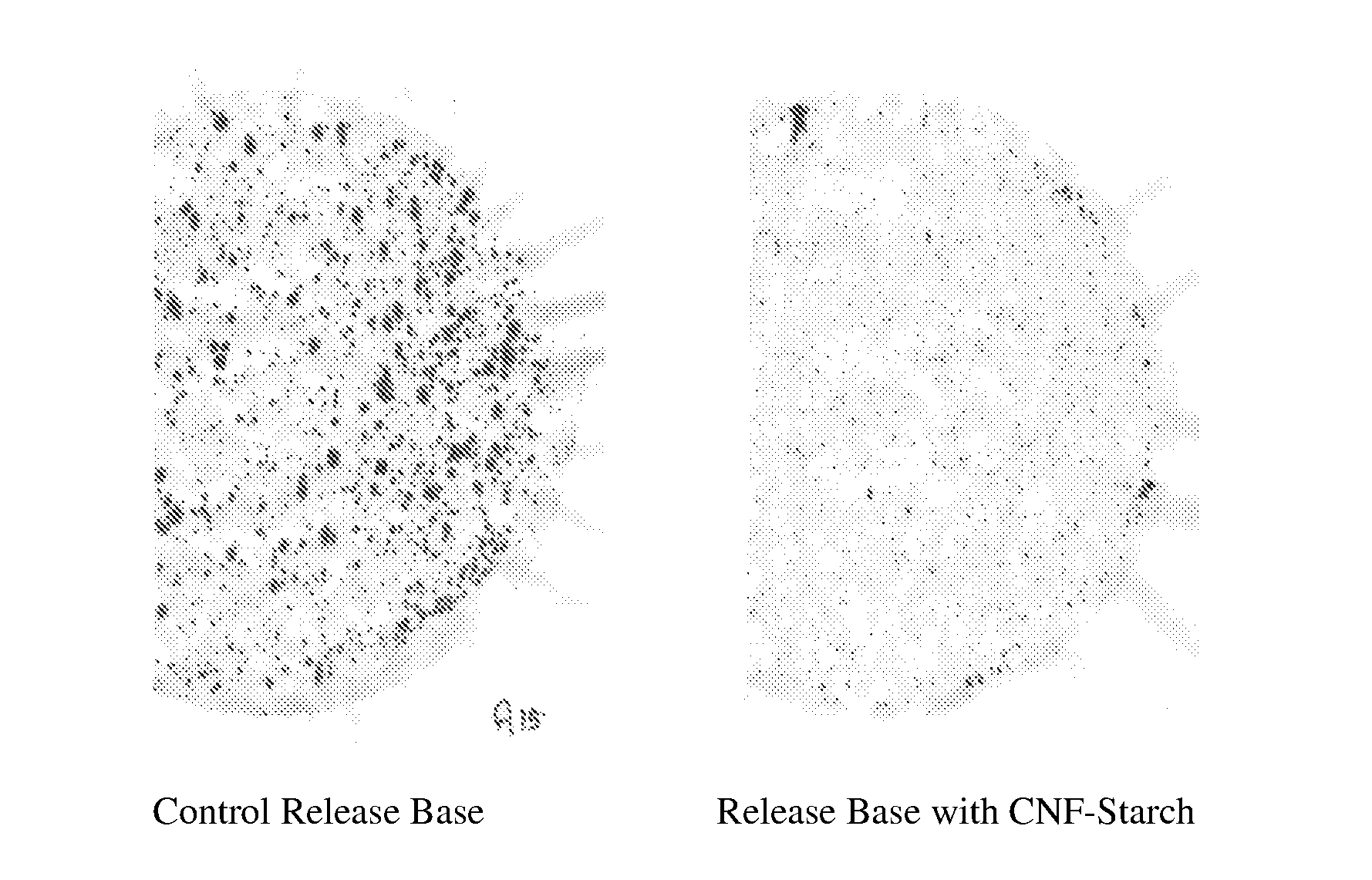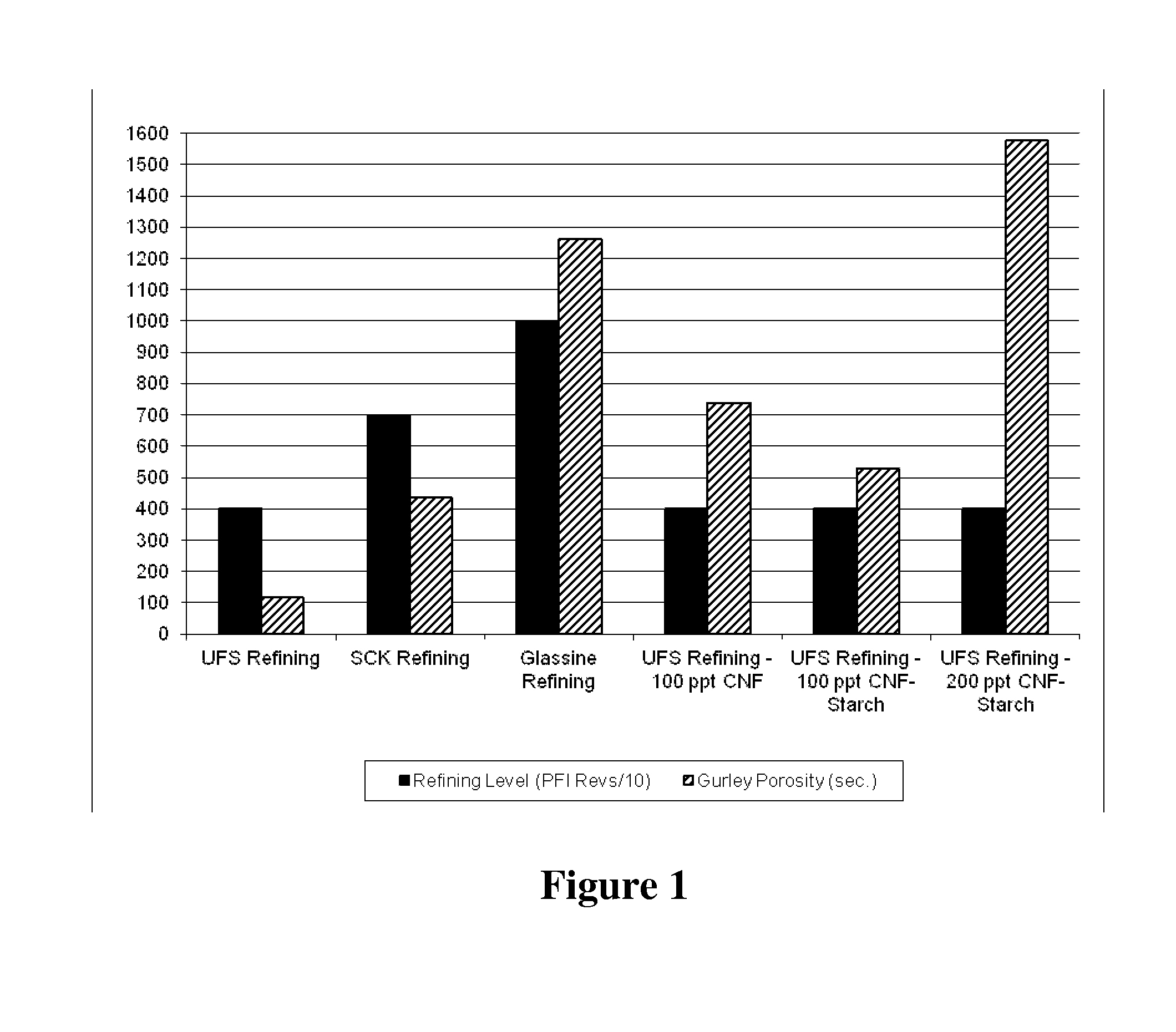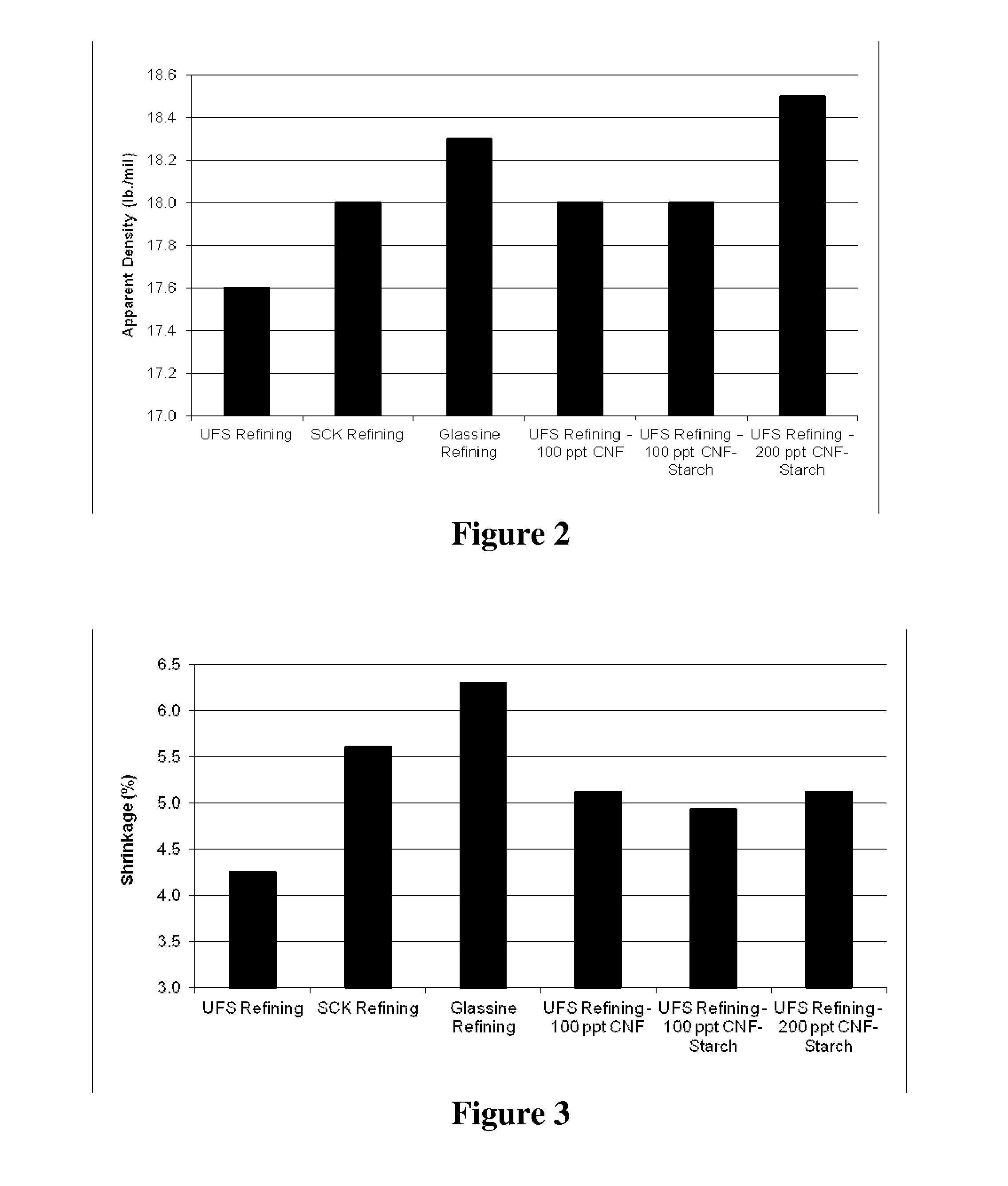Release Paper and Method of Manufacture
a release paper and paper technology, applied in the field of paper making, can solve the problems of increasing manufacturing costs, reducing the productivity of paper machines, and reducing the dimensional stability of final products, so as to improve downstream processing efficiency, reduce the requirement of base weight, and improve the effect of material yield
- Summary
- Abstract
- Description
- Claims
- Application Information
AI Technical Summary
Benefits of technology
Problems solved by technology
Method used
Image
Examples
example 1
Release Base Papers Made with Cellulose Nanofibrils
[0086]This example demonstrates the improved method of producing release base papers according to the methods of the invention.
[0087]The Synergy grade of northern bleached kraft pulp, produced by Sappi Fine Papers North America as a blend of 85% hardwood kraft and 15% softwood kraft pulp, was refined in a PFI laboratory refiner. The degree of refining is a key parameter in producing most grades of paper. Release papers, such as Supercalendered Kraft (SCK) release base and Glassine base typically use furnishes containing highly refined fibers compared to publication papers, such as Uncoated Freesheet (UFS). The relative refining levels typically used for these grades of paper are noted in Table 1. Fiber samples were collected after 4,000, 7,000 and 10,000 revolutions in the PFI refiner, which correspond respectively to UFS, SCK and Glassine grade papers. These fiber samples produced pulps with fiber freenesses of 295 ml, 165 ml and 1...
example 2
Performance of Release Papers
[0097]This example demonstrates the improved performance of release base papers produced according to the invention.
[0098]Two release base papers were produced on the pilot paper machine at the University of Maine. Both papers were produced from a blend of 30% northern bleached softwood kraft pulp and 70% northern bleached hardwood kraft pulp and at a nominal basis weight of 50 lbs / 3000 ft2. The first paper, labeled Control in Table 3, was made from a fiber furnish that was heavily refined resulting in a headbox freeness of 95 ml (TAPPI Standard Method T-227 Canadian Standard Freeness). The second paper, labeled CN200 in Table 3, was made according one embodiment of the invention in which a CNF-Starch mixture (as described in Example 1 above) was added to the fiber furnish at a loading rate of 200 lbs / ton of fiber. The kraft pulp was much less refined that that used to manufacture the control paper, which resulted in a headbox freeness of 200 ml. The hig...
PUM
| Property | Measurement | Unit |
|---|---|---|
| shrinkage | aaaaa | aaaaa |
| smoothness | aaaaa | aaaaa |
| reflectance | aaaaa | aaaaa |
Abstract
Description
Claims
Application Information
 Login to View More
Login to View More - R&D
- Intellectual Property
- Life Sciences
- Materials
- Tech Scout
- Unparalleled Data Quality
- Higher Quality Content
- 60% Fewer Hallucinations
Browse by: Latest US Patents, China's latest patents, Technical Efficacy Thesaurus, Application Domain, Technology Topic, Popular Technical Reports.
© 2025 PatSnap. All rights reserved.Legal|Privacy policy|Modern Slavery Act Transparency Statement|Sitemap|About US| Contact US: help@patsnap.com



